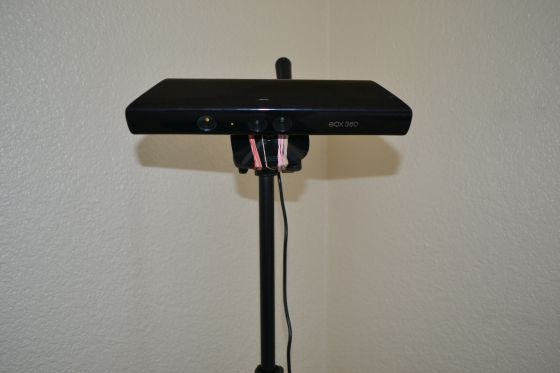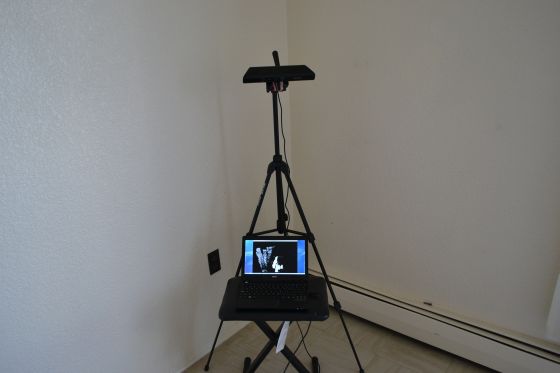Object Tracker using the Kinect Sensor
In this section we will describe our implementation of the Roomba tracker. We specified the requirements
the tracker must satisfy and some simplifying assumptions it can assume. In Section Base-station
we have mentioned how depth data can be streamed from the Kinect sensor to the workstation. We will begin this
discussion by assuming the availability of a continuous stream of depth data.

Figure 1: Kinect camera.
In the first part of this document we will briefly explain two approaches that researchers use to implement object tracking. In the last part we will describe our tracker. The discussion will be very informal, although the underlying theory for object tracking in Computer Vision is very mathematically involved.

Figure 2: Complete Roomba tracker.

Figure 1: Kinect camera.
In the first part of this document we will briefly explain two approaches that researchers use to implement object tracking. In the last part we will describe our tracker. The discussion will be very informal, although the underlying theory for object tracking in Computer Vision is very mathematically involved.

Figure 2: Complete Roomba tracker.